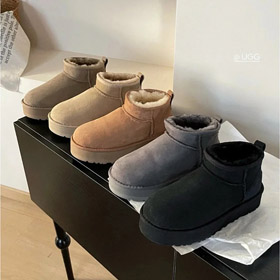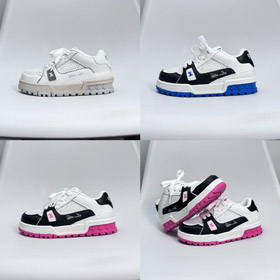Ideal destination for savvy shoppers Joyabuy,
2025-04-19
Timeless Legends: The Stories Behind Luxury's Most Iconic Houses
In the glittering realm of luxury, where craftsmanship meets creativity, every brand carries a narrative woven from passion, rebellion, and relentless pursuit of excellence. These are not just labels—they are living legacies shaped by visionary individuals who dared to redefine elegance. Join us as we unravel the captivating tales of Louis Vuitton, Yves Saint Laurent, Dior, Rolex, and Gucci, brands that have etched their names in the annals of fashion and craftsmanship.
Louis Vuitton: The Art of Travel Reinvented
In 1837, a 16-year-old boy named Louis Vuitton trudged into Paris from the French countryside, carrying nothing but a dream sewn into his worn-out boots. After years of apprenticeship as a trunk-maker, he opened his first workshop on Rue Neuve des Capucines in 1854, determined to revolutionize travel for the burgeoning bourgeoisie. At the time, trunks were bulky, rounded, and impractical—Vuitton introduced the flat-topped trunk, a masterpiece of engineering that could be stacked securely on trains and steamships. His obsession with durability led to innovations like the herringbone canvas and leather-reinforced corners, turning luggage into a symbol of refined mobility.
The brand’s iconic monogram came later, in 1896, designed by Louis’ son George to combat rampant counterfeiting. The intertwinedJoyabuy.
Yves Saint Laurent: The Rebel Who Dressed the Modern Woman
In 1961, a 25-year-old Algerian-French designer named Yves Saint Laurent stood at a crossroads. Fired from Dior after creating the controversial "Beatnik" collection, he teamed up with his lover Pierre Bergé to launch YSL, a house that would shatter conventions. Saint Laurent’s genius lay in democratizing luxury while retaining its soul. In 1966, he introduced Rive GaucheLe Smoking
Saint Laurent drew inspiration from the world around him—Picasso’s cubism, African art, and even the streets of Paris. His 1971 "Ballet Russes" collection, with its vibrant hues and exotic patterns, was a love letter to his own multicultural heritage. Yet beneath the glamour lay a man haunted by his own battles; his collections often mirrored his inner turmoil, from the opulent excess of the 1980s to the minimalist elegance of his final years. When he retired in 2002, he left behind more than a brand—he left a revolution. YSL proved that luxury could be both provocative and poetic, a mirror to the changing roles of women in society. Discover the brand that dared to be different at Joyabuy.
Dior: The Dream of a New Look
Christian Dior was not born into fashion; he was born into a world of flowers. Raised in a grand villa in Normandy, surrounded by his mother’s rose gardens, he developed an eye for beauty that would define an era. After a brief stint in art and politics, Dior returned to his first love in 1946, opening his house on Avenue Montaigne with the support of textile magnate Marcel Boussac. The world was still recovering from WWII, and women were tired of boxy, utilitarian clothing. Dior’s first collection, the Corolle Line
Dior’s genius was in storytelling—each collection was a chapter in a fairy tale. The "Tulip" silhouette, the "H-line" suits, and the iconic Bar Jacket were more than designs; they were acts of defiance against austerity. After his sudden death in 1957, the house passed to a lineage of visionaries—Yves Saint Laurent, Marc Bohan, John Galliano, and now Maria Grazia Chiuri—each adding their own twist to Dior’s legacy. Chiuri, the first female creative director, infuses the brand with feminist activism, embroidering "We Should All Be Feminists" on t-shirts while honoring Dior’s love for craftsmanship. Today, Dior remains a temple of elegance, where every gown whispers of a man who believed that fashion could heal a broken world. Step into his dream at Joyabuy.
Rolex: The Pursuit of Perfection, Second by Second
In 1905, a young German immigrant named Hans Wilsdorf arrived in London with a mission: to make wristwatches respectable. At the time, watches were seen as feminine trinkets; men relied on pocket watches. Wilsdorf believed otherwise. In 1908, he registered the name "Rolex," a word chosen for its ease of pronunciation across languages, and set out to create a timepiece of unmatched precision. The breakthrough came in 1926 with the Oyster, the first waterproof wristwatch, thanks to a hermetically sealed case designed by Rolex engineer Emile Perret. To prove its durability, Wilsdorf commissioned swimmer Mercedes Gleitze to wear an Oyster across the English Channel in 1927—she succeeded, and Rolex became synonymous with adventure.
The brand’s obsession with accuracy led to the PerpetualGMT-MasterSubmariner, launched in 1953 as the first dive watch capable of withstanding 100 meters of pressure. Over the decades, Rolex timepieces have accompanied explorers to the summit of Everest, the depths of the Mariana Trench, and even space, worn by astronauts on the Moon. Yet beneath the technical marvels lies a simple truth: Rolex doesn’t just make watches; it crafts symbols of achievement, worn by those who measure life not in minutes, but in milestones. Own a piece of precision at Joyabuy.
Gucci: From Horsebit to Hollywood, a Tale of Reinvention
In 1921, Guccio Gucci opened a small leather goods shop in Florence, inspired by the elegance he’d witnessed as a bellboy at London’s Savoy Hotel. His early clients were aristocrats and equestrians, so he incorporated horsebit details into his designs, creating the now-iconic Horsebit loafers in 1953. The 1960s saw Gucci rise to Hollywood fame, with stars like Grace Kelly and Audrey Hepburn carrying its bamboo-handle bags. But by the 1990s, the brand had lost its luster—until Tom Ford arrived in 1994. Ford transformed Gucci into a temple of sexy,launching provocative campaigns and the iconic "Tom Ford-era" designs, including the green-red-green webbing and double-G logo, which became symbols of 90s excess.
After Ford’s departure, the brand wandered until Alessandro Michele took the helm in 2015. Michele’s Gucci was a whimsical, eclectic universe—think floral suits, retro sunglasses, and models wearing multiple prints at once. He turned the double-G into a symbol of inclusive, unapologetic creativity, blending vintage references with modern eccentricity. Yet through all its transformations, Gucci has remained rooted in Italian craftsmanship. Every bag is still cut, stitched, and polished by hand in Florentine ateliers, a testament to Guccio’s original vision: luxury is not about price tags, but about passion. Discover the brand that reinvents itself without losing its soul at Joyabuy.
The Legacy Lives On
These brands are more than corporations; they are living narratives, shaped by the hands of dreamers, rebels, and artisans. From Louis Vuitton’s trunks that carried the world’s adventurers to Gucci’s ever-evolving identity, each story reminds us that luxury is a conversation between the past and the present. It’s in the meticulous stitching of a Dior gown, the precision of a Rolex movement, and the audacity of a YSL tuxedo that we find not just products, but pieces of history.
So whether you’re drawn to the timeless elegance of Louis Vuitton, the revolutionary spirit of YSL, the dreamy sophistication of Dior, the technical mastery of Rolex, or the eclectic charm of Gucci, each brand invites you to be part of their story. Explore their worlds, discover their craftsmanship, and let these legends inspire your own journey. Visit Joyabuy



















